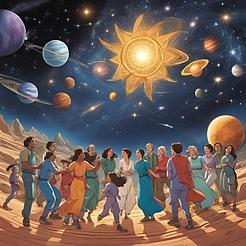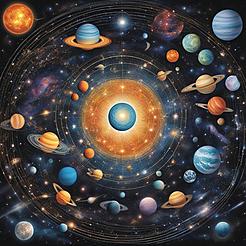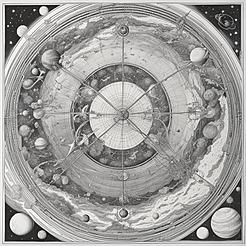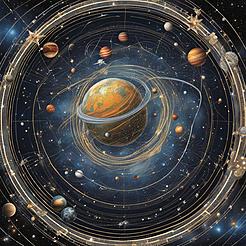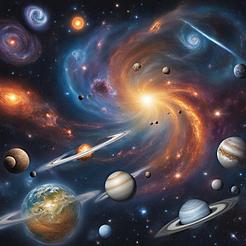 henrydjacob
henrydjacob- Chapter
- 2024-04-15

As we journey further into the depths of the cosmos, beyond the intricate dance of galaxies and the cosmic collisions that shape the universe, we arrive at a chapter that unveils the celestial symphonies that resonate throughout the cosmos. Welcome to "Celestial Symphonies: Harmonies of the Universe," where we delve into the mesmerizing patterns of motion orchestrated by celestial bodies, reflecting the beauty and order that define the cosmic landscape.
In the vast expanse of space, celestial bodies engage in a cosmic ballet guided by the invisible yet omnipresent force of gravity. From the elegant pirouettes of planets around their parent stars to the majestic waltz of galaxies in the cosmic dance, each movement is a note in the symphony of the universe. These gravitational interactions not only govern the motion of celestial bodies but also create harmonious patterns that echo the beauty and order of the cosmos.
Imagine the graceful orbit of Earth around the Sun, a celestial waltz that has persisted for billions of years with remarkable precision. This intricate dance, guided by the laws of gravity, ensures the stability of our planet's orbit and sustains the conditions necessary for life to flourish. As we witness this cosmic choreography, we are reminded of the delicate balance maintained by gravitational forces, harmonizing the movements of celestial bodies in a cosmic symphony.
Beyond our own solar system, the moons of Jupiter perform a celestial ballet of their own, their orbits choreographed by the gravitational pull of the gas giant. Io, Europa, Ganymede, and Callisto dance in perfect harmony, their interactions sculpted by Jupiter's immense gravitational influence. This celestial quartet embodies the harmonious interplay of gravitational forces, creating a mesmerizing display of orbital dynamics that captivates astronomers and enthusiasts alike.
The beauty of celestial symphonies extends to the distant reaches of the universe, where galaxies cluster together in cosmic ensembles that defy our earthly senses. The gravitational interactions between galaxies give rise to cosmic harmonies on a grand scale, shaping the distribution of matter in the cosmic web and weaving intricate patterns of cosmic filaments and voids. These celestial symphonies, composed of billions of galaxies, resonate with the gravitational melodies that bind the universe together in a harmonious cosmic dance.
As we gaze upon the celestial tapestry of harmonies in the universe, we are reminded of the words of astronomer Carl Sagan, who famously said, "The beauty of a living thing is not the atoms that go into it, but the way those atoms are put together." In the same vein, the beauty of the cosmos lies not only in the individual celestial bodies that populate it but in the harmonious orchestration of gravitational interactions that give rise to the cosmic symphony we behold.
References:
- "Cosmos" by Carl Sagan
- "The Elegant Universe" by Brian Greene
- "Gravity: An Introduction to Einstein's General Relativity" by James B. Hartle
- "Cosmos" by Carl Sagan
- "The Elegant Universe" by Brian Greene
- "Gravity: An Introduction to Einstein's General Relativity" by James B. Hartle
